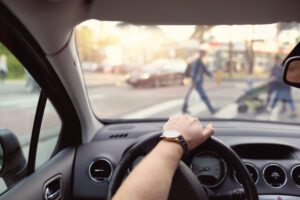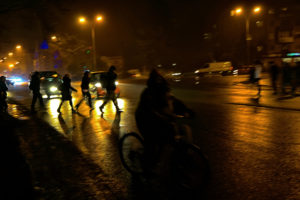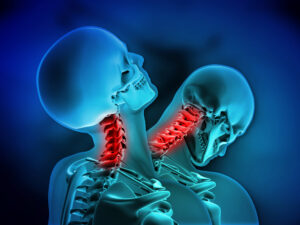On March 28, 82-year-old Virginia Resident John Bright died from injuries sustained two days earlier when he was hit by a car in a crosswalk. Unfortunately, this is not an isolated case. In fact, new statistics reveal that pedestrian traffic fatalities are only getting worse.
According to a report by the Governors Highway Safety Association (GHSA), a projected 6,227 pedestrians died in traffic accidents in 2018, marking the highest fatality count in nearly three decades. The report also highlights the increasing proportion of pedestrian deaths: while in 2008, pedestrians accounted for 12 percent of all traffic deaths, that number rose 16 percent in 2018.
National Public Radio (NPR) identified a variety of factors that likely contribute to the rising rate of pedestrian fatalities, including the following:
Roads are designed for cars, not pedestrians.
Simply put, most roads don’t have enough crosswalks. Despite research revealing that pedestrians are only willing to walk about 300 feet to the nearest crosswalk, some roads have as much as a one or two-mile gap between crosswalks. On roads designed for rush-hour traffic, this leads to pedestrians crossing in unsafe areas where cars travel at a high speed.
There are more SUVs on the road.
The number of individuals buying light trucks is increasing at a higher rate than the number of individuals purchasing smaller cars. Since SUVs are larger and heavier than typical cars, they are also more dangerous. A pedestrian is more likely to be killed by the forceful impact of being hit by an SUV than that of a smaller vehicle that weighs less.
Cell phone use has increased dramatically.
Pedestrians’ and drivers’ cell phone data usage has increased by over 4,000 percent since 2008. This can cause distracted pedestrians to unknowingly walk in the pathway of vehicles, or vice versa. In other words, people aren’t paying as much attention to the road as they used to, and that has fatal consequences.
For a multi-faceted problem, more than one solution will likely be necessary moving forward. One potential solution is a 2019 legislative proposal that would enact a completely hands-free bill across the entire state of Virginia. Unfortunately, that bill failed and we will have to wait until next year for the legislature to take the action needed to save lives. Richard Retting, author of the Governors Highway Safety Association report, has also suggested adding pedestrian sensor technology to more vehicles in the future.
Others believe that cracking down on poor driving and issuing more tickets could help. In the words of Achilleas Kourtellis, the assistant program director at University of South Florida’s Center for Urban Transportation Research: “no matter what you put out either on the road or in the car, you still have people involved. We know that the human is the cause of most crashes – 94 percent of most crashes – meaning there is room for improvement in behavior.”

Tom Curcio has devoted his career to representing people seriously injured or killed in car, pedestrian, bicycle, and truck crashes, and by dangerous dogs, unsafe products, and premises. He works tirelessly to obtain the compensation his clients are legally entitled to so they may rebuild their lives with dignity. Tom is the co-author of the book Evidence For The Trial Lawyer, and a much sought-after speaker on personal injury, trial practice, evidence, and professionalism. Contact Tom at tcurcio@curciolaw.com.















One Comment
Marc
Why can't we enforce distracted/cell phone use behind the wheel the same way we do driving under the influence if the end results of many of the accidents are the same? What is the ratio of deaths related to DUI vs. texting behind the wheel? This may perhaps reveal the answer with respect to where we need to be with legislation and enforcement, because whatever is currently in place, isn't working.
Comments for this article are closed.